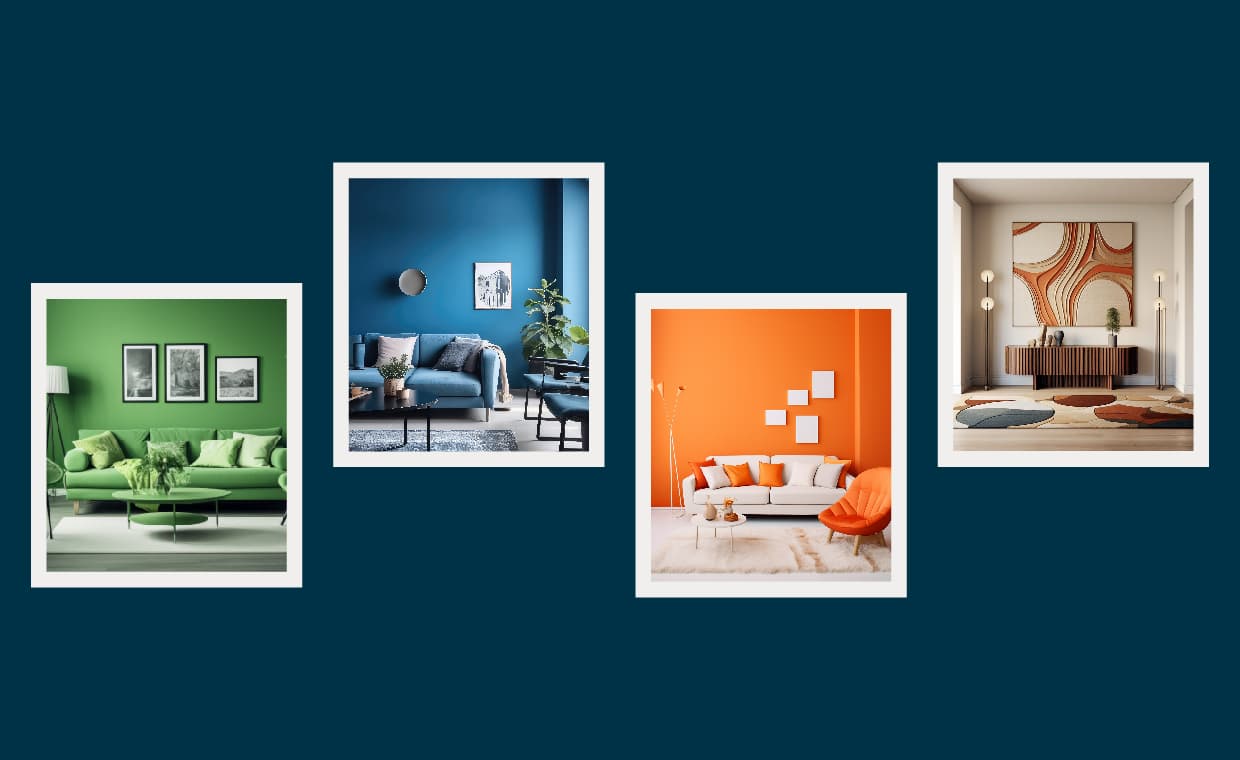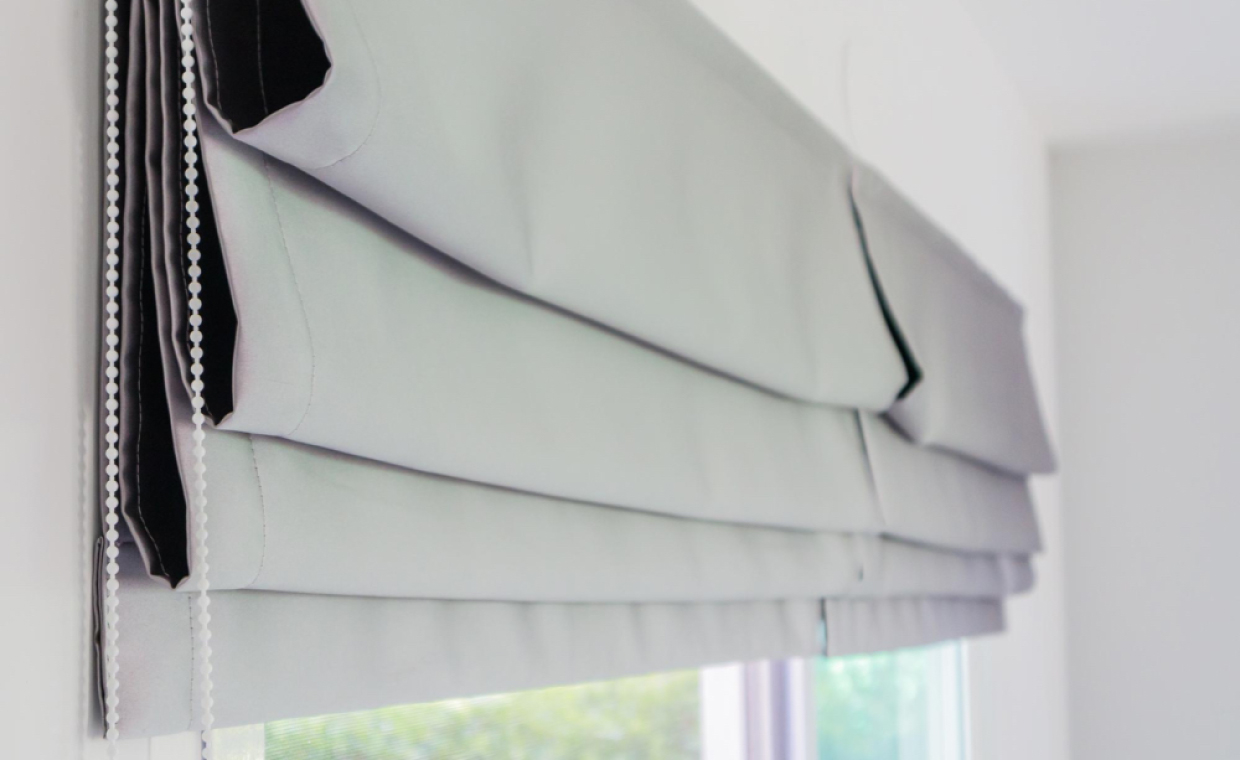
The colour palette is one of the crucial aspects of designing a space. You can choose several colours or keep things elegantly simplistic by selecting a single colour.
The monochromatic colour scheme employs a single colour for the design but incorporates a variety of shades, tints, and tones within the palette of the design to break up the monotony. Despite the bold, dramatic look, it still appears relatively elegant and feminine.
What is a Monochromatic Color Scheme?

According to ‘Marcia Moses’ (Author of the book “Understanding Color: Creative Techniques in Watercolor”), a monochromatic colour scheme is a colour scheme revolving around a single colour, which is neutralised by adding its complementing colour to lower the intensity of the main colour. Hence, in its simplest definition, a monochromatic colour scheme consists of a palette of colours based on a single hue. Black, white, and grey complete the colour scheme by complementing shades, tones, and tints of the single hue. This creates a soothing and relaxing colour palette in your home by varying the colours from one hue to another. The monochromatic colour scheme is ideal for any space since it incorporates dark and light hues. Monochromatic palettes are the easiest to create since they are created from a single hue of colour. There’s no denying that monochromatic rooms are deceptively difficult to design, and anyone who’s ever had to do so knows what it’s like.
Why Monochromatic?

Monochromatic colour schemes can play magic in any home décor by enabling you to discover creative ways to enhance the aesthetic appeal of your home by restricting yourself to just one colour. You can instead focus your creativity on your furniture and walls to give your home its unique character, rather than colour-matching.
Choosing a monochromatic palette reduces confusion caused by too many colour options. You can harmoniously transition from one room to another if you apply this theory correctly. Remember, just one colour can create an impactful look. If you are confused and unsure of how to create a monochromatic colour scheme, then all you have to do is select a base colour for your monochromatic colour scheme and then use varying shades.
Strategic Placement for Impact

The monochrome design is all about using colour strategically. In compact spaces, cool tones with a glossy finish make them feel airy. Lighter variations evoke tranquility, while bolder tones add drama. Use placement to create a visual hierarchy: lighter shades for walls and ceilings, and bolder tones for furniture and accents. Play with variations of your base colour to define zones and focal points within the space.
Inspiration and Maintaining Balance

Start small! Experiment with a monochromatic palette in a powder room before moving on to a larger area. Look around your space for inspiration – a rug, artwork, or even furniture can be the jumping-off point for your colour scheme. While a single colour reigns supreme, pops of contrasting colours, textures, or patterns add intrigue and prevent monotony. Play with metallics, wood tones, textured fabrics, or unique artwork for an extra touch.
Monochrome Magic in Every Room

The beauty of monochromatic interior design lies in its versatility. Here’s a glimpse of how it can transform each room:
- Bathrooms: Light-reflecting colours create a sense of spaciousness. Add contrast with artwork or linens in a complementary colour.
- Living Rooms: Jewel tones or bold colours add luxury. Use lighter variations for walls, and introduce greenery for vibrancy.
- Kitchens: A white monochromatic palette is timeless and bright. Opt for a slightly darker shade for cabinetry or floors.
- Bedrooms: Monochromatic palettes create a calming atmosphere. Experiment with pastels or bolder hues. Introduce variations through bedding, artwork, and cosy throws.
- Home Offices: Muted, organic tones minimise distractions and promote focus.
Get Familiar with The Terms and Basics of Color

It will be helpful if you understand some colour theory terminology before choosing your monochromatic colour scheme. To create a harmonious colour palette, you will have to learn how to vary just one colour to have a consistent theme. There are simple distinctions that separate shades, hues, tones, and tints from each other.
Tint
The term tint in colour theory refers to a mixture of a colour and white, mixed to increase the colour’s brightness.
Shade
The term shade in colour theory refers to a mixture of a colour and black, mixed to increase the colour’s darkness.
Tone
A true tone, as defined by colour theory, is any hue or combination of pure colours to which you can add only grey, as grey is truly neutral in this definition. Grey is composed only of white and black pigments.
Hue
A hue is simply a colour; to be precise, it is any colour on the colour wheel. Grey, black, and white are not hues.
Colour
In general, the word “colour” refers to any hue, tint, tone, or shade that we see in our daily lives. White, black, or grey are colours.
Palette
A colour palette is the complete range of colours or a collection of colours and tools that one can use as part of a design.
Also Read: How to Use Colour Theory to Decorate Your Home Interiors?
15 Ways to Enhance Your Interior Spaces with the Monochromatic Palette
01. All White with a Pop of Colour Pattern

The light-coloured interior of this home, as well as the bright white walls painted on the inside, are ideal to accent the vibrant pops of colour in the room and give the space more vibrancy. The colours bring the decors to life.
02. Bloom With Periwinkle and White

Using periwinkle for curtains, ceilings, and furniture creates a relaxing atmosphere in any space, embracing the soothing vibes of a monochromatic palette. Besides their bold quirkiness, pastels and neons contribute to a feeling of modernity, while also bringing a splash of colour into a room.
03. Mellow Grey and Glowing Yellow

Yellow is one of the most vibrant colours. When combined with white, it creates a warm and cheerful environment in any space. Although it can be difficult to match its colours with its interior, grey is always a good choice when in doubt.
04. Garnish With Grey and Black

There is nothing more sophisticated and subtler than using grey and black colours in a space to create a sophisticated and subtle vibe. Use grey and black together to achieve a modern look in your home.
05. Brighten With White and Shiny Silver

You can use white interior in a variety of ways, from a Bohemian, texture-rich aesthetic to a classic, coastal look. The colour white can create a soothing environment, and the addition of silver will add a touch of elegance to the space.
06. All Blue

Incorporating a monochromatic colour palette with different shades of blue will evoke a soothing atmosphere in the space. The addition of this colourful piece of furniture will further enhance the classic feel of the room.
07. Make it All Green

The green colour of your home can give you the feeling of living in a dense forest. It has a lively, playful feel. Throughout the room, you’ll see that the deep green couch, coupled with the greenery seen in the real world, ties seamlessly together. Incorporate various shades of green from light to dark, to create a monochromatic palette that exudes tranquility and harmony in your interior design.
08. Light Browns and Warm Whites

The white wall creates a perfect backdrop for the various shades of brown colours throughout the room, enhancing its ambience. The brown-coloured architectural elements, such as the coffee table, the ceiling, and the fans, give the space an earthy, cosy feel.
09. Natural Neutrals

This monochrome room is stunning with its neutral linens, grey built-in, and a variety of textures. The uniform colour scheme of the interior helps to make the space feel neat and cohesive, even though it is a cosy space.
10. Pale Pink, Cream and Wood

A delicate pink that adds a touch of elegance, looks undeniably stylish when paired with cream and wood furniture. It has a feeling of freshness and modernity, coupled with brightness and openness.
11. Black and White

Rooms painted in black do not always feel smaller. It usually makes it appear larger. Soft black paint achieves a sense of intimacy better than a lighter colour. In addition, the eclectic pieces that are white add a more lived-in and homier feel to the room.
12. Yellow Brown and Cream

It will complement the cream colour of the wall if the wall is in a geometric pattern. Their subtle design and brown colour give them a natural look that complements each other well.
13. Variations of Cream

Using cream in a variety of ways makes the space appear lighter and airy. You can create a minimalist and monochromatic interior design by combining whitewashed flooring with white pine as a base.
14. White and Orange

The combination of colours in this colour palette may be a bit loud for you. Make a statement with this bold colour and white furniture, pendant lamps and side tables.
15. Tones of Purple

The bright and bold shades of purple give the room a sense of variety and purpose. It creates an elegant and sophisticated appearance. In addition to the above-mentioned ways, if you want to know more tips for choosing the colour scheme for your home, you must have a look at our blog:
10 Important Tips for Choosing Colour Scheme of Your Home!
Brighten Your Space in Right Colours

Utilising a monochromatic palette in your project offers convenience, ease, and versatile creativity. Enhance the effect by adding an extra colour or two for added vibrancy. Bring your monochromatic space to life with radiant textures, patterns, and finishes, creating unexpected contrasts. The right use of monochromatic colour combinations promotes harmony and a pleasing aesthetic, adding a comforting sense to any room in the house.
FAQs
01. What Are Monochromatic Colors?
Colour schemes that have one colour or tint as their base are known as monochromatic colour schemes. You can alter the saturation and brightness by choosing the base colour.
02. What Is the Monochromatic Theme?
Monochromatic themes are characterised by the use of tints and shades of the same hue/colour to create a sense of unity in any space. The use of this colour scheme creates a sense of simplicity, elegance, and cleanliness.
03. Why Go for Monochromatic?
Since monochrome is only one colour, it creates harmony easily. When you choose a monochromatic colour palette, you will have your unifying element. Using a monochromatic colour scheme creates a strong sense of visual cohesion between the different elements of the design.
04. How to Create a Monochromatic Palette?
The monochrome colour scheme consists of one base hue extended to include one or more shades, tones, and tints that are part of the same colour family. You usually have 3 or 7 variants in your one-colour palette, all made up of darker shades and lighter tints of your original colour, depending on your style and preferences.
05. What Are the Possible Monochromatic Combinations?
The term “monochromatic combination” is used to describe a colour combination composed of variations of one colour. You can create monochromatic colour schemes with any colour. Depending on the shade and tint of the colour, you can use it for the interior design of your space.
Also Read: 17 Important Painting Tips | Know Before Painting a Home!
Image Courtesy: Image 5
Author Bio
Saili Sawantt – She is an Architect and Interior Designer by profession. Writing is what she treats as her passion. She has worked as an Architectural Writer, Editor, and Journalist for various design as well as digital portals, both national and international. Formerly she has also worked with Godrej Properties Limited (GPL) Design Studio, Mumbai, due to her keen interested in learning about Sustainability and Green buildings. Apart from this, she runs her blog ‘The Reader’s Express’ and is a practicing Architect & Interior Designer.






























